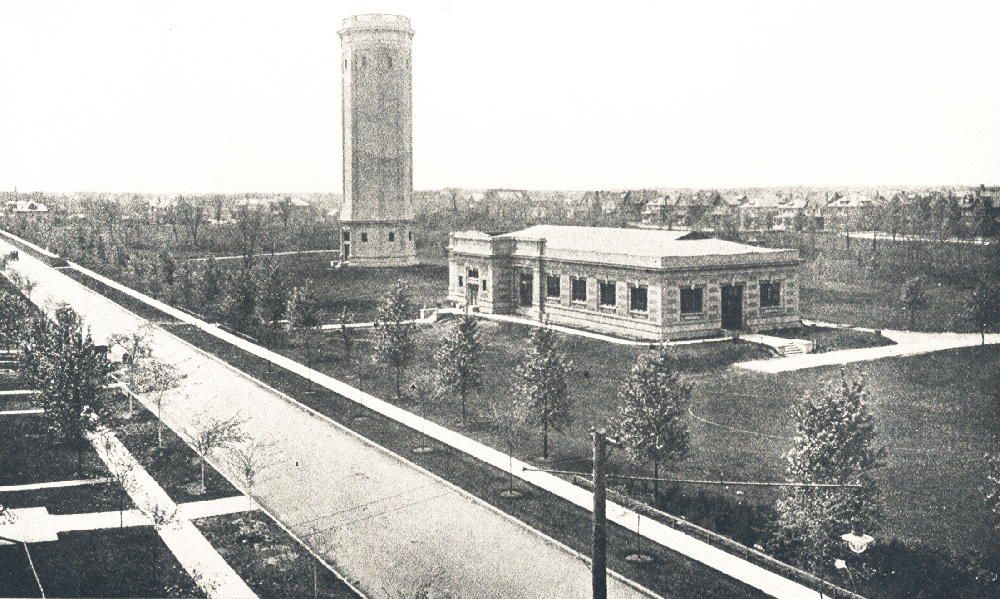NEWS
Historic Water Towers Withstand the Pressure of Time
For many communities, their water towers’ form was just as important as their function. Two towers in the northwest part of the state still serve as points of pride and local identity.

High Water
You’ve undoubtedly seen them – the water towers in all shapes and sizes that rise above just about every Indiana town. Given their visually dominant role, they often become an orienting landmark, the perfect billboard for a community, and often the location for a clandestine meet-up after school.
For the people of Remington, the town water tower marked a milestone for the small community in southern Jasper County. Although the town was founded in 1860, it took almost 40 years to grow large enough that it needed a public water tower. In 1897, the Town of Remington contracted with the Challenge Wind Mill and Feed Mill Company of Batavia, IL, to build a tower connected to the new town hall for $11,300.

From a limestone foundation, the tower’s 24-inch-thick brick walls climb to a height of 104 feet, topped with a 66,000-gallon cypress water tank (a 1924 replacement for the original water tank). These days, gravel fills the tank in order to maintain its stability. The tower stopped serving as a reservoir for water in 1984, when the town built a new steel water tower nearby.
The Remington tower is the state’s only remaining public water tower constructed of brick and topped with a wooden tank. Now used as a municipal garage, the adjoining brick building previously serves as a town hall, fire station, and jail. Listed in the National Register of Historic Places and as a Water Landmark from the American Water Works Association, the tower stars in Remington’s annual June Water Tower Days festival.
Supplying Steel City
The history of Gary’s historic municipal water tower shares a similar origin, but on a much larger scale. Gary’s extraordinary transformation from sand dunes to “Steel City” required a massive modern infrastructure system.
Shortly after the city’s founding by U.S. Steel in 1906, the Gary Heat, Light, and Water Company constructed the utilities necessary for tens of thousands of new residents and businesses. The company hired civil engineer John W. Alvord of Chicago. He drew on his experiences observing waterworks around the world and supplying water for the 1893 World’s Columbian Exposition to capture the fresh water of Lake Michigan nearly three miles away.

(Photo: Calumet Regional Archives, IU Northwest)
The centerpiece of the waterworks was a Beaux-Arts pumphouse that no longer stands, and the 133-foot water tower on Gary’s westside that still stands. Completed in 1909, the tower’s tank measured 30 feet in diameter and sat on eight 90-foot steel columns. Rather than settling for an exposed steel skeleton, the Gary Heat, Light, and Water Company added a concrete block shell that transformed the utilitarian tower into an octagonal landmark, complete with decorative cornice and parapet wall.

(Photo: Calumet Regional Archives, IU Northwest)
The waterworks buildings became the centerpiece of the surrounding Jefferson Park, Gary’s first public park. In 1911, the city lit a fire atop the tower in the hour leading up to the July 4 fireworks, signaling the radically transformed landscape. Indiana American Water Company continues to use the site and tower, now one of the earliest structures on the city’s skyline.

Wood from the masons’ scaffolding was repurposed to create the narrow wood staircase inside Gary’s water tower, and a large bell hangs inside — once used to signal fires and other emergencies in town.
Stay up to date on the latest news, stories, and events from Indiana Landmarks, around the state or in your area.
